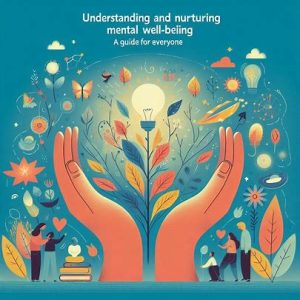Introduction
In today’s fast-paced world, maintaining good health is more important than ever. Regular exercise stands as a cornerstone of a healthy lifestyle, offering benefits that extend beyond physical fitness to mental well-being and overall quality of life. Whether it’s a brisk walk in the park, a high-intensity gym session, or a calming yoga flow, incorporating consistent physical activity into your routine can transform your health. This article explores the multifaceted benefits of regular exercise, current trends shaping the fitness landscape, practical ways to integrate exercise into daily life, and tips for staying motivated. By understanding its importance and applications, anyone can harness the power of regular exercise to live a healthier, more vibrant life.
Why Regular Exercise Matters
Physical Health Benefits
Regular exercise is a powerful tool for improving physical health. Cardiovascular exercises like running, cycling, or swimming strengthen the heart, improve circulation, and lower blood pressure. According to the American Heart Association, just 150 minutes of moderate aerobic activity per week can reduce the risk of heart disease by up to 30%. Strength training, such as weightlifting or bodyweight exercises, builds muscle mass, enhances bone density, and boosts metabolism. For example, a 2023 study published in the Journal of Strength and Conditioning Research found that resistance training twice a week significantly improved bone health in older adults, reducing the risk of osteoporosis.
Exercise also plays a critical role in weight management. By burning calories and increasing metabolic rate, physical activity helps prevent obesity, a growing global concern. The World Health Organization reports that obesity rates have nearly tripled since 1975, making regular exercise a vital defense against this epidemic. Additionally, activities like stretching or yoga improve flexibility and reduce the risk of injuries, ensuring long-term mobility.
Mental Health and Emotional Well-being
The benefits of exercise extend far beyond the body. Physical activity is a proven mood enhancer, as it triggers the release of endorphins—natural chemicals in the brain that promote feelings of happiness and reduce stress. A 2024 meta-analysis in The Lancet Psychiatry found that regular exercise, particularly aerobic activities, can reduce symptoms of depression and anxiety by up to 40% in some individuals. For instance, a simple 30-minute jog can provide an immediate mood boost, helping individuals manage daily stressors more effectively.
Exercise also improves cognitive function. Studies show that regular physical activity enhances memory, focus, and problem-solving skills by increasing blood flow to the brain. For example, a 2025 study from Stanford University revealed that older adults who engaged in regular walking showed improved performance on memory tests compared to sedentary peers. Furthermore, exercise promotes better sleep quality, which is essential for mental clarity and emotional resilience.
Social and Lifestyle Benefits
Beyond individual health, regular exercise fosters social connections and a sense of community. Group activities like fitness classes, team sports, or running clubs provide opportunities to meet new people and build relationships. For example, participating in a local soccer league not only improves physical fitness but also creates a sense of belonging. Exercise can also enhance self-esteem and confidence, as achieving fitness goals—whether running a 5K or mastering a yoga pose—instills a sense of accomplishment.
Current Trends in Exercise
The fitness industry is constantly evolving, with new trends making exercise more accessible and engaging. In 2025, several trends are shaping how people approach regular exercise:
Technology-Driven Fitness
Wearable devices like smartwatches and fitness trackers have revolutionized how people monitor their activity. These devices track steps, heart rate, and calories burned, providing real-time feedback to motivate users. Apps like Strava and Fitbit offer personalized workout plans and community challenges, encouraging consistency. Virtual reality (VR) workouts are also gaining traction, offering immersive experiences like cycling through virtual landscapes or boxing in a digital ring.
Hybrid Fitness Models
The rise of hybrid fitness—combining in-person and online workouts—has made exercise more flexible. Many gyms now offer livestreamed classes, allowing people to join from home or at the gym. This trend, popularized during the COVID-19 pandemic, remains strong in 2025, catering to busy schedules. For example, platforms like Peloton provide on-demand cycling and yoga classes, blending convenience with professional instruction.
Functional Fitness and Cross-Training
Functional fitness, which focuses on exercises that mimic everyday movements, is trending for its practicality. Activities like kettlebell swings or bodyweight circuits improve strength and coordination for daily tasks, such as lifting groceries or climbing stairs. Cross-training, which combines different exercise types (e.g., strength, cardio, and flexibility), is also popular for its holistic approach to fitness.
Mind-Body Integration
Mind-body exercises like yoga, Pilates, and tai chi are surging in popularity due to their dual focus on physical and mental health. These practices emphasize mindfulness, helping individuals manage stress while improving flexibility and strength. In 2025, yoga studios are incorporating mindfulness apps and guided meditation into sessions, enhancing the mental health benefits.

How to Incorporate Regular Exercise into Your Life
Start Small and Set Realistic Goals
For beginners, the key to regular exercise is starting small. A 10-minute walk or a short bodyweight workout can be a great starting point. Set achievable goals, such as exercising three times a week, and gradually increase intensity or duration. For example, someone new to running might aim to complete a 1-mile jog within a month, building up slowly to avoid burnout or injury.
Find Activities You Enjoy
Exercise doesn’t have to feel like a chore. Choose activities that spark joy, whether it’s dancing, hiking, or playing a sport. For instance, if you love music, try a Zumba class that combines dance and cardio. Enjoying the activity increases the likelihood of sticking with it long-term.
Create a Routine
Consistency is crucial for reaping the benefits of exercise. Schedule workouts at a specific time each day or week, treating them like important appointments. For example, a morning yoga session or an evening gym visit can become a non-negotiable part of your routine. Using a planner or fitness app can help track progress and maintain accountability.
Leverage Community and Support
Joining a fitness group or finding a workout buddy can boost motivation. For example, signing up for a local running club or attending group fitness classes provides encouragement and accountability. Online communities, such as those on X or fitness forums, also offer support and inspiration.

Overcoming Common Barriers
Time Constraints
Busy schedules are a common excuse for skipping exercise, but even short bursts of activity can make a difference. High-intensity interval training (HIIT), which involves short, intense workouts, is ideal for those with limited time. A 15-minute HIIT session can burn as many calories as a longer, moderate workout.
Lack of Motivation
Staying motivated can be challenging, especially during busy or stressful times. Setting specific, measurable goals (e.g., “I’ll walk 10,000 steps daily”) and rewarding progress can help. Additionally, varying workouts prevents boredom. For instance, alternate between cycling, swimming, and strength training to keep things fresh.
Physical Limitations
For those with physical limitations, low-impact exercises like swimming or chair yoga are excellent options. Consulting a healthcare provider or physical therapist can help tailor a safe and effective exercise plan.
Conclusion
Regular exercise is a transformative practice that enhances physical health, mental well-being, and social connections. From reducing the risk of chronic diseases to boosting mood and confidence, its benefits are undeniable. By embracing current trends like technology-driven fitness and mind-body practices, individuals can find engaging ways to stay active. Whether you’re a beginner or a seasoned athlete, the key is to start small, choose activities you love, and stay consistent. In 2025, the opportunities to integrate exercise into daily life are endless, from virtual workouts to community classes. By making regular exercise a priority, you can unlock a healthier, happier, and more fulfilling life. Start today—your body and mind will thank you.




